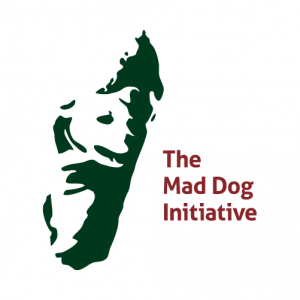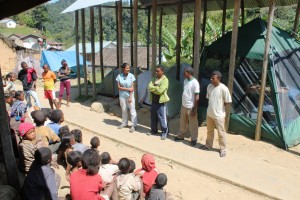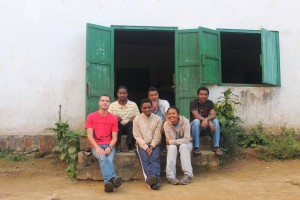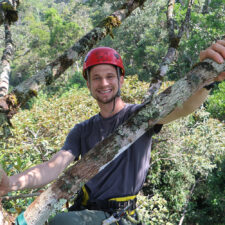Mad Dog Initiative volunteers assist a variety of programs targeting feral dogs through outreach, veterinary services and wildlife surveys.
The Mad Dog Iniative Volunteer Experience
Length of volunteerism: 14 to 45 days (May to early July)
Cost: 2990 US Dollars
Included in cost: Airport pick up and drop off at the closest airport, as well as accommodation and three meals per day!
Not included in cost: Flights and the cost of visas (free if staying in the country for 30 days or less) as well as personal purchases including alcoholic beverages and expendables. The cost of immunizations and medications are not covered.
Type of accommodation: While in the field you will be living in a tent in and around small Malagasy villages. You will be able to take part in a number of local ceremonies while you work directly with the people who are hosting you. In the capital at the start and the end of the expedition, you will be housed in a cozy local guest house nestled in the hills of Antananarivo.
Volunteer Roles
Mad Dog Initiative works to improve conservation through effective control of domestic/feral dogs and wildlife surveys; teams undertake important spay, neuter, and vaccination programs for feral and community owned dogs that are act as predators of Madagascar’s endangered animals. In addition, the organization takes adoptable, feral dogs (e.g. habituated dogs, puppies) to a no-kill sanctuary in the capital where dogs receive behavioral training for an hour a day, medical care, and roam on an enclosed stretch of land. Further, they conduct expansive carnivore and lemur surveys to estimate wildlife populations and evaluate the effectiveness of our capture program.
Volunteers are welcome to join the Mad Dog expedition to the heart of Madagascar’s cloud forest – to assist in these monitoring, spay/neuter, and vaccination programs. Volunteers are needed for both the veterinary and the wildlife monitoring teams. When working with the Mad Dog Initiative, you will be living in Malagasy villages and an immersive cultural experience is assured.
Medical Volunteers
Medical volunteer activities include: Assessing, diagnosing and treating sick and injured dogs and cats; administering anesthesia; and assisting with – as well as performing – surgical procedures (spays and castrations), vaccination programs. These activities will take place field facilities!
Wildlife Monitoring Volunteers
Wildlife monitoring activities include: Conducting camera trapping of Madagascar’s carnivore community and conducting line transect sampling of lemurs across multiple study sites scattered across the Ranomafana National Park. You will work with a Malagasy research assistant hike throughout the national park to collect these invaluable data and then enter these data into our database at the research center.








